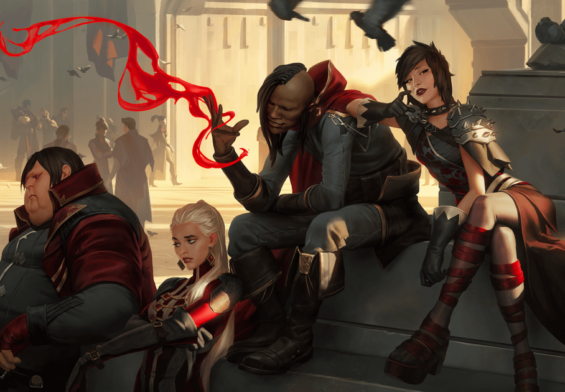By JohnTheKraken
The Dawn of ARPGs: Birth of ARPGs 1970s — 1980s
In the storied tapestry of gaming history, the late 1970s to the late 1980s stand out as a pivotal era that defined the genres we cherish today. One such genre, the Action Role-Playing Game (ARPG), began its journey during this time, weaving action’s adrenaline rush with the deep narrative and character-building elements of traditional RPGs.
Blending Action and Role-playing: The Genesis of a Genre
The traditional role-playing game (RPG) was a realm of numbers, character sheets, and turn-based combat, heavily inspired by tabletop games like Dungeons & Dragons. However, the rapid advancement of computer technology in the late ’70s brought an opportunity to add real-time action to the mix. This fusion blurred the lines between action games, known for their immediacy and reflex challenges, with the deeper strategic and narrative elements of RPGs. This was the birth of the ARPG genre.
Two titles stand out during this embryonic phase of ARPGs: “Temple of Apshai” and its successor, “Gateway to Apshai”. Released in 1979, “Temple of Apshai” is one of the earliest attempts at merging real-time action with RPG mechanics. While primitive by today’s standards, its dungeon delves, monster encounters, and loot mechanics were innovative for the time. The game’s core was exploring the temple’s corridors, battling creatures, and improving your character through equipment — predecessors to mechanics ARPG fans today might find familiar. “Gateway to Apshai,” released in 1983, further polished these elements, presenting a more refined gameplay experience.

Evolving the Formula: Japan’s Formative Contribution to Early ARPG Development
As the ’80s progressed, so did the sophistication of game design, with developers around the world adding their own unique flavors to the blossoming ARPG genre. No discussion of this era would be complete without mentioning the seminal “The Legend of Zelda” for the NES. While it’s a point of debate among purists whether Zelda qualifies as a pure ARPG, its influence is undeniable. Released in 1986, the game masterfully combined real-time combat, exploration, puzzle-solving, and RPG-like progression. Link’s quest to rescue Princess Zelda, battling foes and gathering tools and upgrades, set a gold standard for action-adventure games, influencing countless titles to come.
In the late ’80s, arcade halls echoed with the sounds of “Gauntlet”, a game that many credit as a pioneer of the dungeon crawler subgenre. Players navigated dungeons, battling hordes of enemies in real-time, collecting loot, and working cooperatively — a hallmark that modern ARPGs still emphasize.
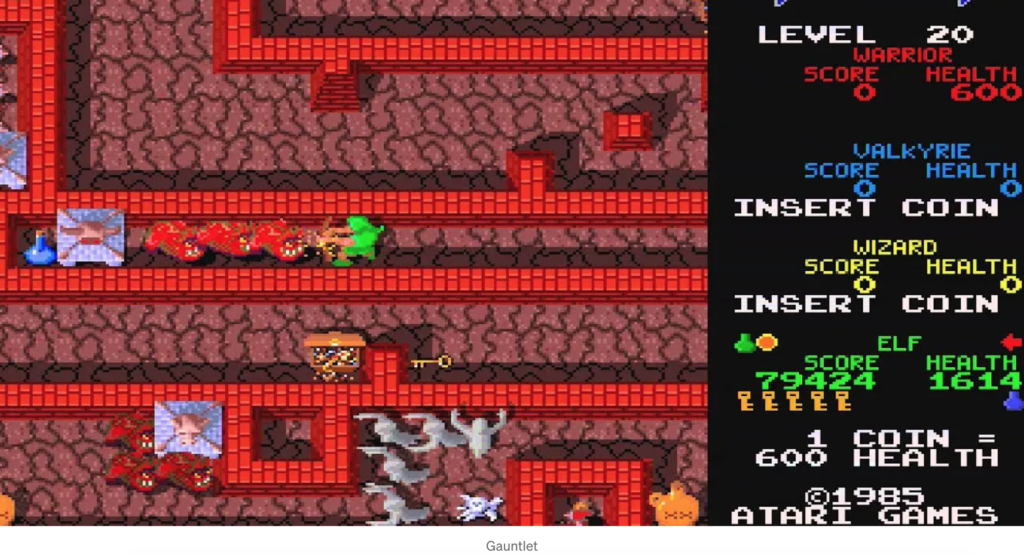
Meanwhile, Japan was quietly crafting its own brand of ARPGs. “Hydlide,” released in 1984, might not be a household name today, but its importance in the ARPG lineage is evident. It introduced mechanics like health regeneration and a unique combat system that saw players ‘bumping’ into enemies to deal damage.
But it was Nihon Falcom’s “Ys series” that would leave a more lasting impression. Debuting in 1987, the Ys games (pronounced “ees”) were notable for their fast-paced combat, epic narratives, and memorable soundtracks. Players controlled the red-haired adventurer Adol Christin across various quests, combating foes in real-time and engaging with vibrant worlds. The series was instrumental in shaping ARPGs, particularly in Japan, setting standards for storytelling and gameplay dynamics that many games would emulate.
This period from the late ’70s to the late ’80s was crucial in laying the groundwork for the ARPG genre. From the rudimentary beginnings of “Temple of Apshai” to the sweeping adventures of “The Legend of Zelda” and “Ys”, these were the formative years. The fusion of real-time action with the depth of RPGs was an experiment that not only succeeded but thrived, laying the foundation for a genre that would dominate the gaming landscape in decades to come. As we reminisce about these pioneering titles, it’s evident that the spirit of innovation and a thirst for combining the best of both action and RPG worlds was always at the heart of ARPGs. And as the pages of history turned, this genre was only poised to grow bigger, better, and bolder.

The 1990s: A Decade of Experimentation and Expansion
As the calendar pages flipped to the 1990s, the gaming landscape was on the cusp of a transformation. The seeds planted in the 1980s were about to bear fruit, and the Action Role-Playing Game (ARPG) genre stood at the precipice of what could be termed its ‘Golden Era’. This decade witnessed the emergence of genre-defining classics, innovations in gameplay, and a shift in the global balance of game development.
Diablo: The Game that Redefined ARPGs
If there’s one title synonymous with ARPGs in the ’90s, it’s undoubtedly “Diablo”. Released in 1996 by Blizzard North, this game was nothing short of a cultural phenomenon. While ARPGs were already gaining traction, “Diablo” presented the genre in a way never seen before. It masterfully blended a haunting, gothic atmosphere with a revolutionary loot system that became its signature. Each foray into the game’s labyrinthine depths offered the promise of legendary artifacts, and the seemingly endless combinations of equipment and skills kept players hooked for hours on end. However, it was Diablo’s online multiplayer feature that truly set it apart. Players from across the globe could join forces, delving into dungeons and battling the forces of Hell. This multiplayer experience, rife with cooperative gameplay, trading, and the thrill of Player vs. Player combat, made Diablo a household name and set a new standard for ARPGs.
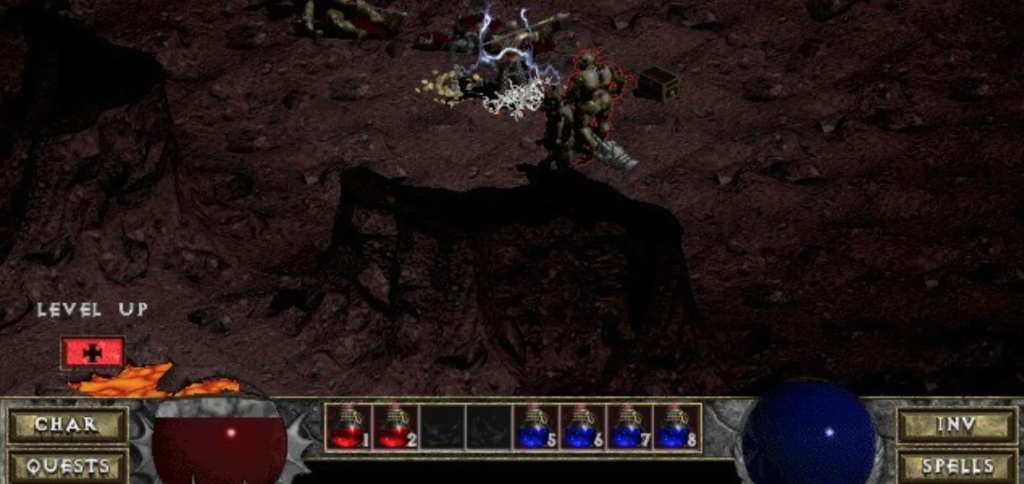
While “Diablo” was making waves in the West, the East was not silent. Games like “Secret of Mana” and “Seiken Densetsu 3” (later known as “Trials of Mana”) redefined what was possible with real-time combat in ARPGs. These titles, produced by Square, were bright, colorful contrasts to Diablo’s dark aesthetic. They brought engaging storylines, captivating characters, and a combat system that was both intuitive and deep. Players could switch between characters on-the-fly, each with its unique abilities, creating dynamic battles filled with strategy. Their success demonstrated that there was room for multiple interpretations of the ARPG genre, each with its unique charm.
However, as the ’90s drew to a close, a gem named “Nox” emerged, released in 2000 by Westwood Studios. Though it arrived in the shadow of the behemoth that was Diablo II, “Nox” was a testament to innovation in the ARPG genre. It presented a more story-driven experience with three distinct campaigns tailored to the player’s chosen class. It eschewed the dark, gothic aesthetic popularized by Diablo, opting for a brighter, more whimsical art style. Though it didn’t achieve the same level of commercial success as some of its contemporaries, “Nox” remains an underappreciated classic, cherished by those who experienced its unique take on the genre.
Parallelly, the East continued to contribute to the genre’s growth with titles like “The Legend of Heroes” and “Terranigma”. While the former laid the foundation for a series that would become renowned for its intricate narratives and world-building, the latter was a masterclass in blending traditional RPG elements with real-time combat. “Terranigma,” developed by Quintet and published by Enix, narrated an epic tale of resurrection and exploration. It stood out for its philosophical themes, memorable characters, and fluid combat system. “The Legend of Heroes,” on the other hand, became emblematic of Nihon Falcom’s dedication to crafting expansive worlds filled with lore, making it a beloved series in ARPG circles.
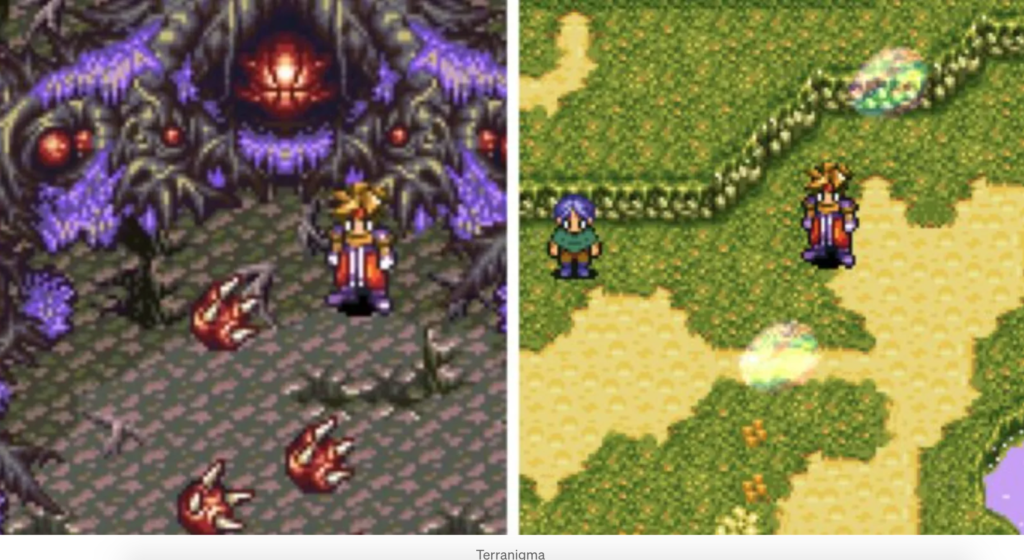
East Meets West: Diverse Approaches to ARPG Design
The 1990s and the early 2000s were transformative years for ARPGs. From the haunting corridors of Diablo’s Tristram to the vibrant landscapes of “Secret of Mana,” the genre expanded in a myriad of directions. Developers experimented, innovated, and pushed boundaries, proving that ARPGs could cater to a variety of tastes and preferences.
“Diablo” showed the allure of dark, loot-driven adventures, while titles like “Secret of Mana” demonstrated the potential for narrative-driven ARPGs with vibrant aesthetics. “Nox” reminded gamers that every game, irrespective of its commercial success, could bring fresh perspectives to the table. And, with games like “The Legend of Heroes” and “Terranigma,” the East continued to carve its niche, bringing intricate storytelling and innovative gameplay mechanics to the fore.
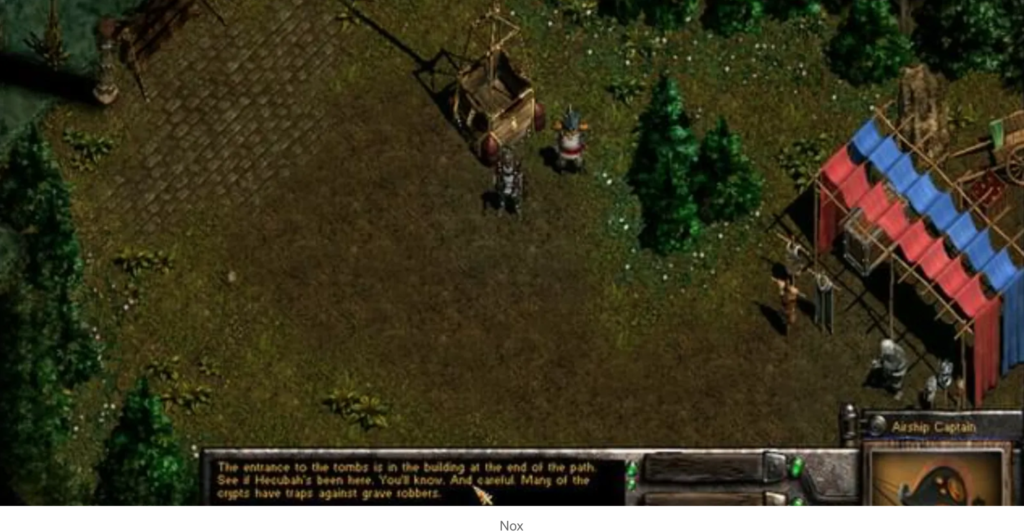
In essence, this era was a celebration of diversity within the ARPG genre. It laid the groundwork for future developers, offering them a rich tapestry of inspirations to draw from. The titles from this period didn’t just define a decade; they shaped the very trajectory of ARPGs , leaving an lasting mark on the world of gaming. As the echoes of their legacy continue to resonate, one can’t help but look back with reverence, thankful for the adventures, stories, and memories these games bestowed upon us.
The Golden Age: 2000–2010
The turn of the millennium witnessed a rebirth of ARPGs. This decade, commonly referred to as the genre’s “Golden Age,” saw groundbreaking titles that forever changed the landscape of gaming. From sequels that surpassed their predecessors to new IPs that became instant classics, the 2000s was a time of unparalleled innovation and creativity for ARPGs.
Diablo II and the Dawn of a New ARPG Era
No discussion of the early 2000s can begin without acknowledging the titan that is “Diablo II.” Released in 2000, it was not just a sequel but a monumental leap from the original. While Diablo introduced players to the world of Sanctuary, Diablo II expanded it with an epic act-based story that took players from the Rogues’ encampment all the way to the Worldstone Keep. The game introduced additional classes, each with its unique skill tree, offering varied gameplay experiences. Its loot system became even more intricate, and the online multiplayer feature, especially the ladder system, ensured players kept coming back for more. It wasn’t just a game; it became a cultural touchstone and the cornerstone upon which future ARPGs would be built.
While the gaming community was enamored with the world of Sanctuary, another phenomenon was on the horizon: MMOs, or massively multiplayer online games. Titles like “World of Warcraft” (WoW) began to incorporate ARPG elements, creating a blend that would attract millions. WoW’s real-time combat, character progression, and loot systems bore clear influences from ARPGs. This marriage between MMOs and ARPGs marked the beginning of a trend where the boundaries between genres started to blur, giving birth to hybrids that drew players from both worlds.

During this time, the East was carving a niche for itself with titles like “MU Online.” Developed by the Korean company Webzen, MU Online took ARPG elements and seamlessly melded them with MMO structures, creating a unique, grind-heavy experience. The emphasis on character builds, gear, and massive guild wars showed how Eastern developers were reinterpreting the ARPG genre, infusing it with local gaming sensibilities.
Consoles, MMOs, and ARPG Fusion: Broadening Horizons
As ARPGs grew in popularity, they began spilling over from PCs to consoles. Titles like “Champions of Norrath” and “Baldur’s Gate: Dark Alliance” brought the genre to PlayStation 2, adapting the classic PC gameplay to console controllers without losing the depth or complexity. These games proved that the ARPG experience was universal, not confined to any one platform.
Japan, never one to be left behind, introduced the world to hybrid action games with strong RPG elements. The “Monster Hunter series”, developed by Capcom, blended real-time action with in-depth character progression, crafting, and, most prominently, cooperative multiplayer. These titles marked a departure from traditional ARPGs, emphasizing player skill and cooperation.
Amidst these innovations, there were titles like “Fate” (2005) and “Titan Quest” (2006) that held the torch for classic ARPGs. They focused on dungeon crawling, loot, and character builds, all while introducing fresh settings and mechanics. “Titan Quest,” with its mythological backdrop, allowed players to wield the powers of gods, while “Fate” offered a more whimsical experience set in the town of Grove.
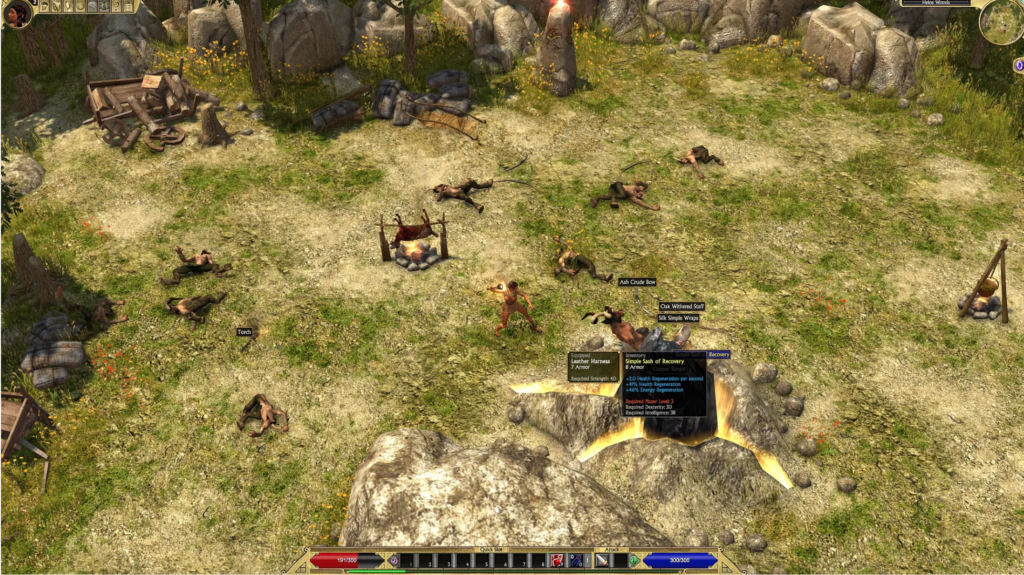
Indies Step Up: The Unexpected Challengers of the ARPG Space
The late 2000s were transformative, mainly because of the rise of indie developers. “Torchlight” (2009), developed by Runic Games, proved that you didn’t need a massive team or budget to capture the magic of ARPGs. With its vibrant art style, deep customization, and a pet system, Torchlight was both a homage to classic ARPGs and a fresh take on the genre.
Eastern MMO-ARPGs continued evolving with titles like “Dekaron” and “Silkroad Online.” They took the foundation laid by games like MU Online and expanded upon it, offering more expansive worlds, intricate combat mechanics, and complex trade systems. They represented the East’s ongoing dialogue with the ARPG genre — a conversation filled with innovation and reinterpretation.
The 2000s were a renaissance for ARPGs. They moved from strength to strength, breaking barriers and constantly reinventing themselves. Whether it was the dark corridors of Diablo II, the sprawling realms of World of Warcraft, the bustling markets of Silkroad Online, or the charming town of Torchlight, ARPGs offered something for everyone. This decade proved that the genre was not static; it was alive, evolving, and ever-expanding, always ready to surprise and captivate its audience. The Golden Age was not just a period of history; it was a testament to the genre’s resilience, innovation, and its unfading allure.

Modern Times and Innovations: 2010–2023
The journey of ARPGs into the modern era is a testament to the genre’s capacity to reinvent itself, adapting to new technologies, design philosophies, and player expectations. As we move through the decade and beyond, we see franchises coming of age, the influence of other genres, and the eternal dance between East and West in game design.
Early 2010s: Giants and New Blood
In 2012, Blizzard released “Diablo III”, a title that faced significant scrutiny even before its launch. Controversies around its always-online requirement and the real-money auction house clouded its early days. However, over time, with patches, expansions, and the removal of the auction house, Diablo III refined its formula and went on to become one of the best-selling video games of all time. Its Reaper of Souls expansion, in particular, was praised for addressing many of the core game’s issues.
Yet, the ARPG crown wasn’t solely Blizzard’s to wear. 2013 saw the rise of Grinding Gear Games’ “Path of Exile”, a free-to-play ARPG that combined intricate gameplay mechanics with a business model that felt fair to players. Its complex skill tree and ever-evolving leagues ensured it wasn’t merely an alternative to Diablo but a worthy competitor in its own right.
Titles like “Grim Dawn” and “The Incredible Adventures of Van Helsing” series further enriched the ARPG landscape, providing diverse settings and mechanics.
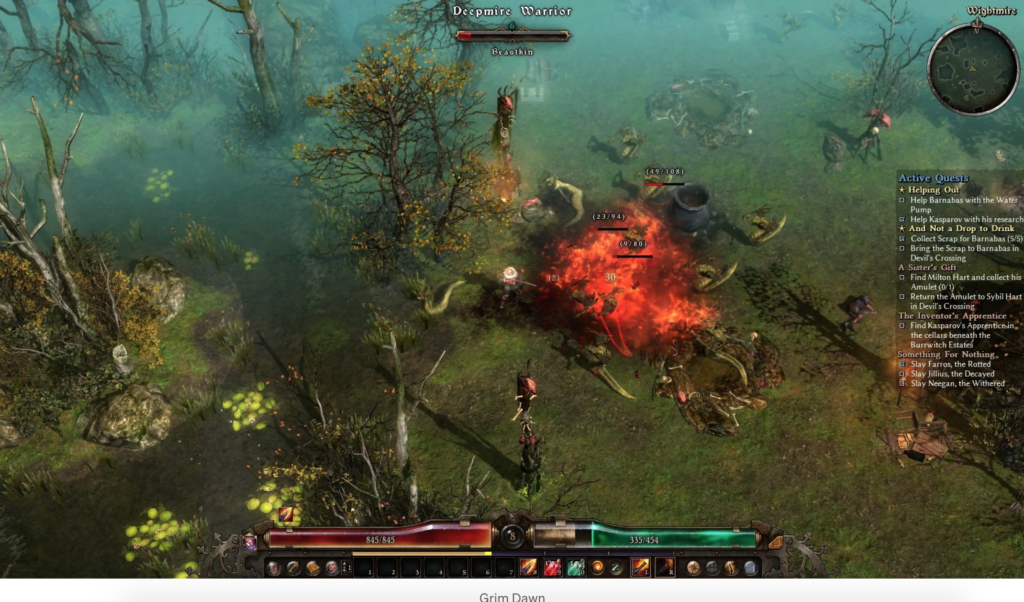
Another significant development was the birth of the Souls-like sub-genre. FromSoftware’s “Dark Souls” series melded punishingly challenging action combat with deep RPG mechanics, creating an experience both harrowing and rewarding.
Mid 2010s to Early 2020s: Expansion and Diversification
The mid-2010s continued to see ARPGs branching out in various directions. “Wolcen: Lords of Mayhem” introduced a fresh take on the genre, with its rotating skill tree and a fluid class system that allowed players to blend abilities from different archetypes.
“Path of Exile” saw a slew of expansions, each introducing new mechanics, regions, and challenges. Its dedication to evolving content and player feedback solidified its place at the ARPG roundtable.
The mobile gaming realm wasn’t left untouched. Titles like “Raziel” and “Black Desert Mobile” showcased that ARPG experiences could be both intricate and engaging on smaller screens, without compromising depth.
Perhaps one of the most notable contributions from the East during this period was Smilegate’s “Lost Ark”. Initially released in Korea in 2018, it merged MMO structures with classic ARPG gameplay. With its stunning visuals, vast world, and combo-based combat, Lost Ark quickly gathered a global following, anticipating its wider release.
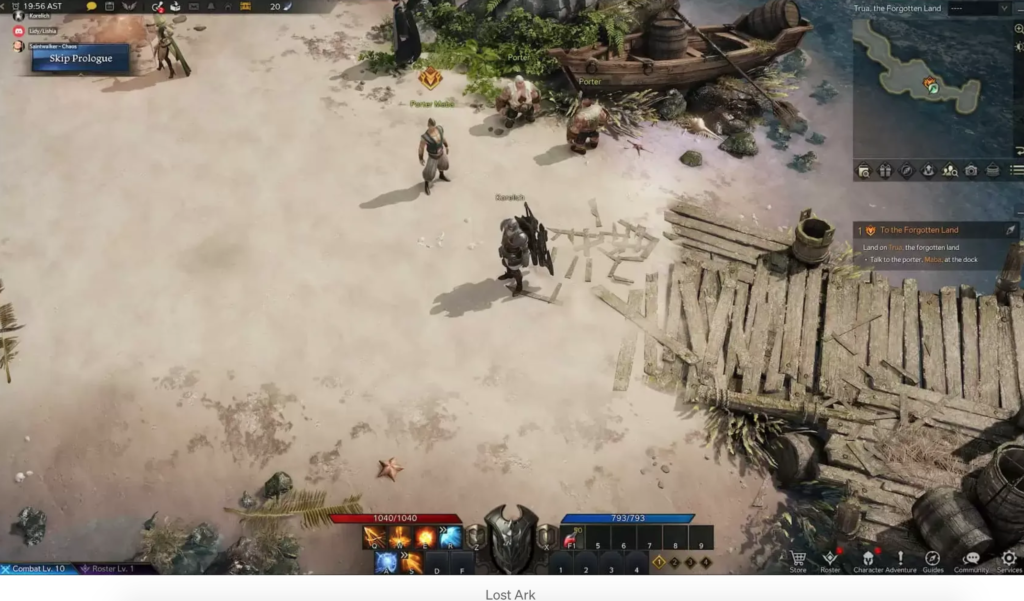
2020–2023: Refinement and Exploration
The twilight of the 2010s and dawn of the 2020s marked a distinctive era of evolution for ARPGs, with developers venturing into previously uncharted territories of the genre.
Central to this renaissance was the triumphant return of Diablo. After what felt like an eternity, 2023 welcomed Diablo IV. The game echoed the haunting allure of “Diablo II”, with darker tones and gameplay that resonated deeply with fans, drawing widespread critical acclaim.
Narrative depth found renewed focus in Torchlight III spinning tales rich in complexity, weaving intricate storylines that pulled players deeper into the heart of the world and its inhabitants. The stories were no longer just backdrops; they became integral to the gameplay experience.
In 2024, Path of Exile 2 will continue this trend of innovation, with a closed beta scheduled to begin on June 7th. The sequel will feature a number of new innovations, including a 1500-node passive skill tree, six new classes, and six new acts. With its ambitious scope and innovative features, Path of Exile 2 is poised to be one of the most anticipated ARPGs of the year. It will be interesting to see how the game builds on the success of its predecessor and pushes the genre forward.
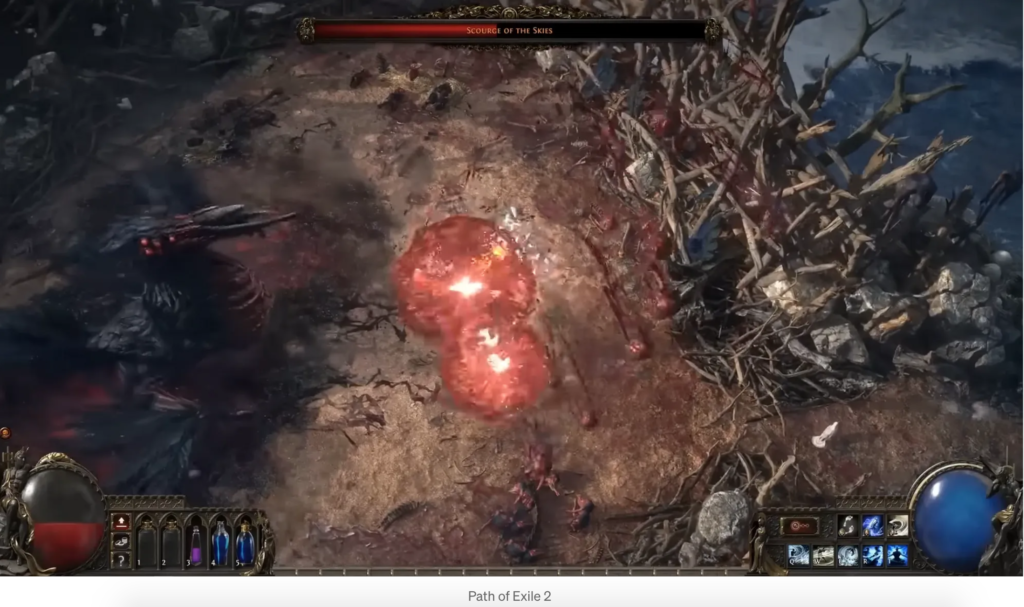
Beyond these major trends, the ARPG space saw a surge in mobile gaming popularity, perhaps an ode to our increasingly on-the-go lifestyles. Multiplayer and co-op modes became focal gameplay features, emphasizing communal adventures in these vast worlds. Developers integrated procedural generation techniques, ensuring that no two gameplay experiences were the same, enhancing replayability. Moreover, the live-service model began to dominate, offering consistent updates and expansions to keep the adventurer in all of us perpetually engaged.
In 2023, the ARPG genre is not just thriving, but also showing exciting growth and energy. With a mosaic of innovations and steadfast commitment to player experience, it’s evident: the future for ARPGs gleams with promise.




